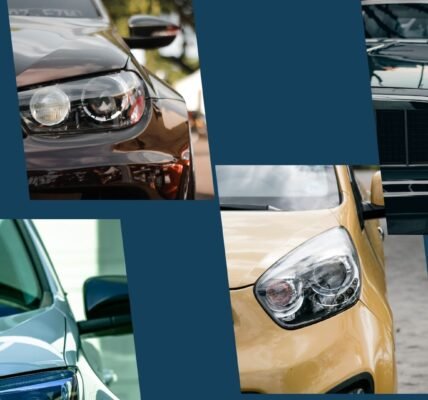As cars move from traditional mechanical engineering to advanced digital technology, the digital transformation of automobiles is clear. This shift includes a wide range of innovations, from AI systems to connectivity. Each new feature brings drivers closer to the future of transportation.
1. AI Takes the Wheel
Artificial intelligence (AI) is now at the core of the digital transformation of automobiles. AI systems enable self-driving features, advanced safety systems, and even predictive maintenance. For example, AI can analyze driver behavior, adapting to patterns and making adjustments to enhance safety.
Moreover, AI’s influence goes beyond autonomous driving. AI is present in voice-activated controls, assisting with everything from navigation to entertainment. With these systems, drivers can stay connected, safe, and informed on the road.
2. Vehicle Connectivity and the Internet of Things
The Internet of Things (IoT) connects cars in new, powerful ways. IoT-enabled vehicles communicate with each other and their environment. This feature is especially important for real-time updates on traffic, weather, and road conditions.
Vehicle-to-Vehicle (V2V) and Vehicle-to-Infrastructure (V2I) communication are driving this connectivity. These systems improve safety by alerting drivers of potential hazards. In fact, V2V and V2I could reduce road accidents significantly, making connected cars a key part of future transportation.
3. Software-Defined Vehicles (SDVs)
A major element in the digital transformation of automobiles is the rise of software-defined vehicles (SDVs). Unlike traditional vehicles, which rely mainly on hardware, SDVs use software for key operations. This shift allows cars to receive updates just like smartphones. Over-the-Air (OTA) updates enable continuous improvements, adding new features and fixing issues without a trip to the service center.
OTA updates also enable a new level of customization. Automakers can roll out upgrades for features like navigation, entertainment, and even engine performance. Drivers enjoy the latest features without needing a new car, making SDVs the future of automotive tech.
4. Augmented Reality (AR) Dashboards
AR dashboards transform the way drivers interact with their vehicles. Instead of displaying information on traditional dashboards, AR projects data onto the windshield. Important data like speed, navigation directions, and safety alerts appear in the driver’s line of sight, reducing distractions.
AR dashboards enhance the driving experience. They show lane guidance, mark potential hazards, and display points of interest. With augmented reality, the digital transformation of automobiles focuses on safety and convenience.
5. Advanced Infotainment Systems
Infotainment systems have come a long way. Today’s systems are more than just audio players. They integrate with smartphones, allowing drivers to access apps, make calls, and play music seamlessly. Voice control and touchscreens offer ease of use, keeping drivers focused on the road.
Personalization is another key aspect. Many infotainment systems recognize the driver and adjust settings accordingly. For example, the car can automatically adjust seat position, temperature, and favorite playlists. These digital upgrades make driving a more enjoyable experience.
6. Enhanced Safety with Digital Assistance
Digital safety features are a significant aspect of the digital transformation of automobiles. Features like automatic emergency braking, lane-keeping assistance, and blind-spot monitoring reduce the risk of accidents. Many vehicles also use in-cabin cameras and sensors to detect driver fatigue or distraction, issuing alerts to prevent accidents.
Some cars even take control in emergencies. For instance, if a driver fails to respond to alerts, the car can brake or adjust the steering. These safety advancements create a safer driving environment, highlighting the benefits of digital technology.
7. Data Collection and Predictive Maintenance
Data plays a huge role in today’s cars. Sensors collect data on performance, alerting drivers to maintenance needs before problems arise. This predictive maintenance saves time and money. It can detect issues like tire pressure, oil levels, or brake wear, sending alerts to the driver or service center.
For automakers, data is invaluable. It offers insights into how cars perform in real-world conditions. Companies can use this information to improve future models. Predictive maintenance enhances reliability, making vehicles more convenient for drivers.
8. Electric Vehicles (EVs) and Digital Battery Management
Electric vehicles (EVs) are a central part of the digital transformation of automobiles. EVs rely heavily on digital systems to manage battery life, charging, and performance. Advanced battery management systems (BMS) monitor energy use, optimizing performance and extending battery life.
Digital tools help EV drivers find nearby charging stations, check battery status, and manage charging schedules. As EV technology improves, these digital systems will continue to evolve, making electric vehicles more user-friendly and efficient.
9. Biometric Security and Access
Biometric technology is revolutionizing vehicle access. Instead of traditional keys, many cars now use fingerprint or facial recognition to unlock and start the vehicle. This biometric access ensures that only authorized users can operate the car, improving security.
Biometrics also personalize the driving experience. Once recognized, the car adjusts to the drive
Conclusion
The digital transformation of automobiles is reshaping the future of transportation. From AI and IoT to predictive maintenance and biometric access, these innovations are moving the auto industry into a new era. Each advancement adds to a safer, more efficient, and enjoyable driving experience.
As we move forward, the digital transformation of automobiles promises even more exciting changes. Automakers are focusing on sustainable, intelligent solutions that enhance the driving experience. The road ahead is digital, and the journey has only just begun.





